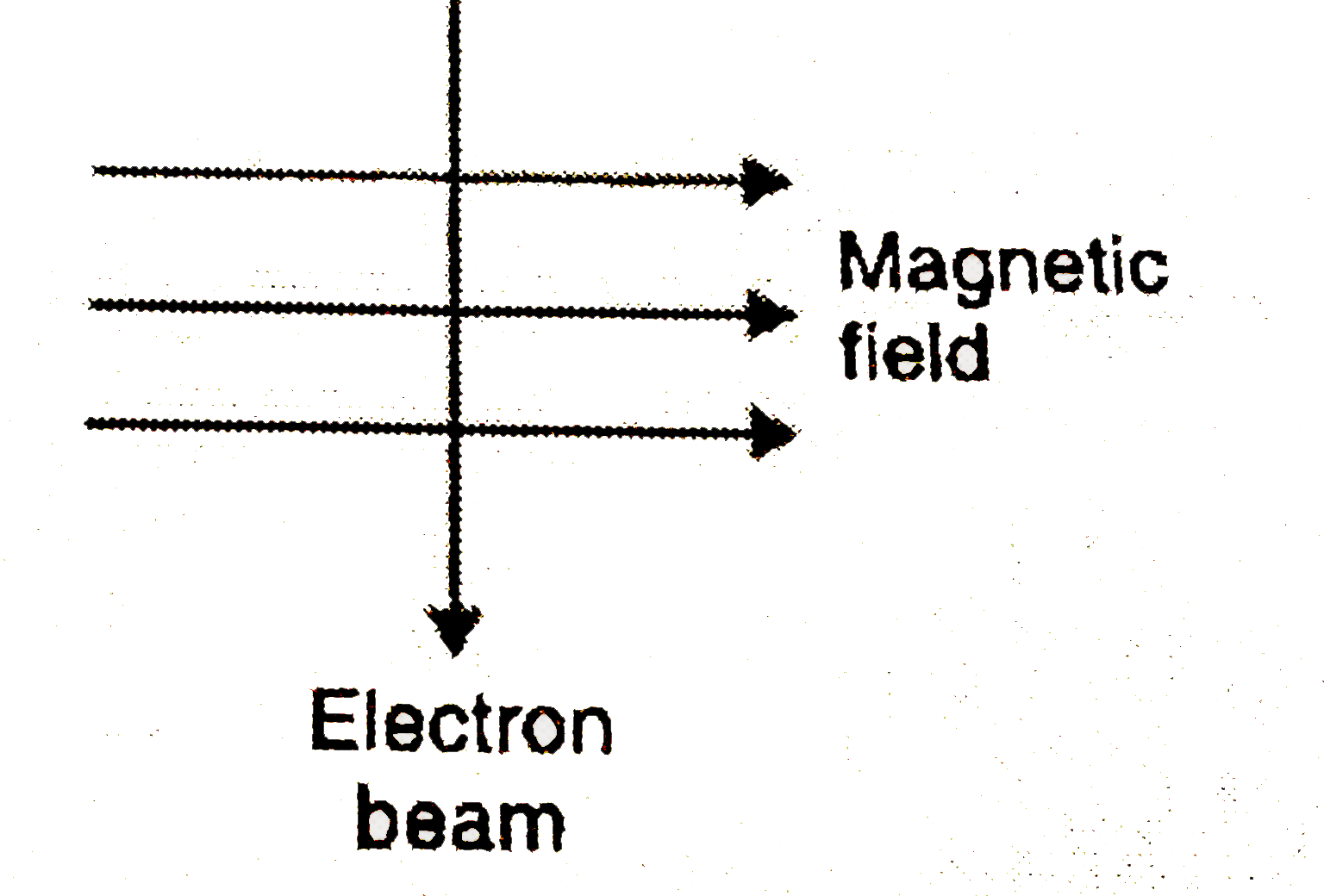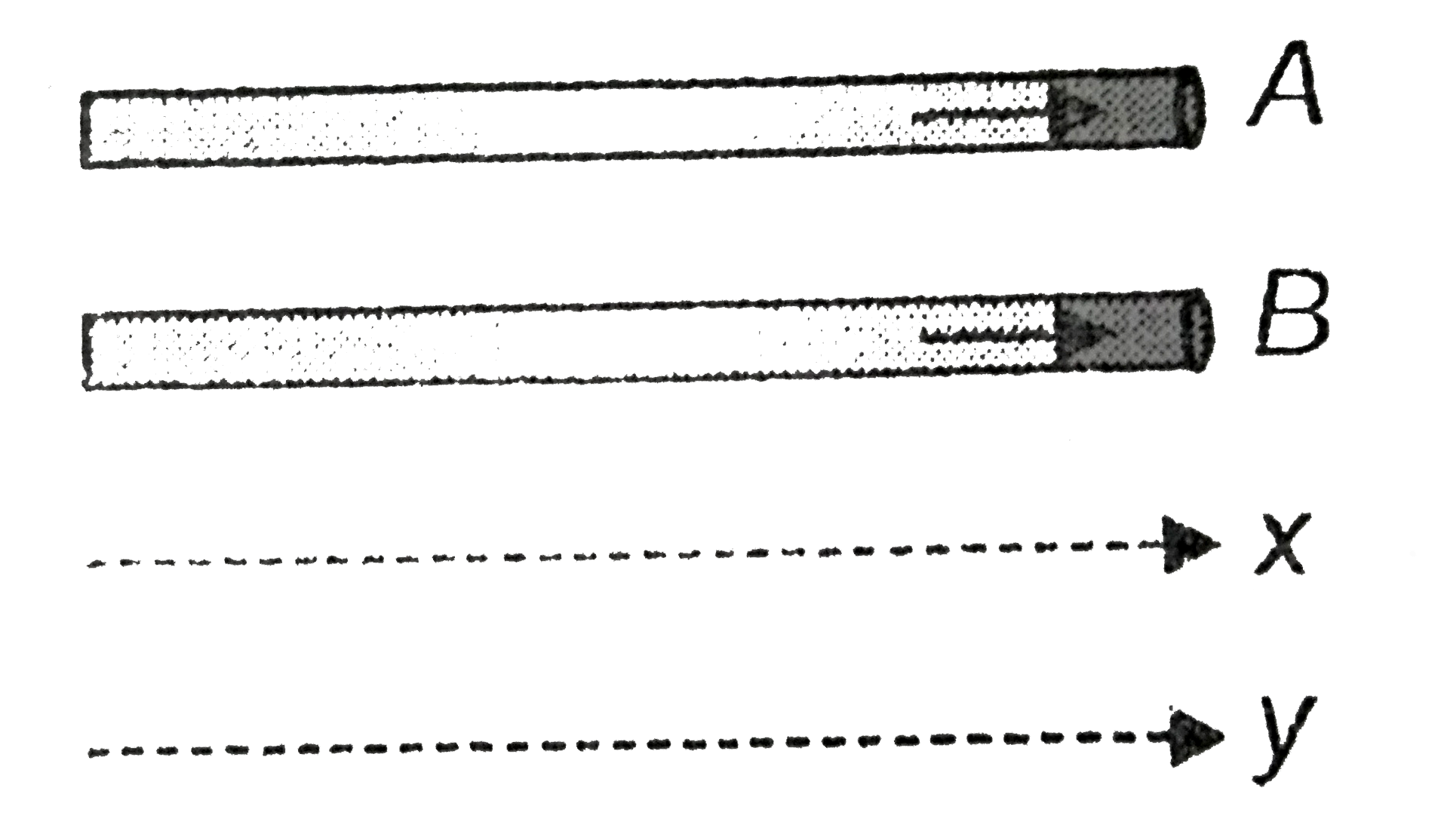A proton beam is fired from west to east and an electron beam is fired parallel to it in the same direction. Force on the electron beam will be
upwards
downwards
towards the proton beam
away from the proton beam
The correct Answer is:d
To solve the problem of determining the force on the electron beam fired parallel to a proton beam, we can follow these steps:
Step 1: Understand the scenario
We have two beams: a proton beam moving from west to east and an electron beam moving in the same direction (east). The proton beam generates a magnetic field due to its motion.
Step 2: Determine the magnetic field produced by the proton beam
The magnetic field B produced by a moving charge (the protons in this case) can be calculated using the Biot-Savart law. The direction of the magnetic field produced by a moving positive charge is given by the right-hand rule.
- For a proton moving from west to east, the magnetic field will be directed in a circular manner around the path of the proton. Above the proton beam (where the electron beam is located), the magnetic field will point downward.
Step 3: Analyze the force on the electron beam
The force F on a charged particle moving in a magnetic field is given by the Lorentz force law:
F=q(v×B)
where q is the charge of the particle, v is its velocity, and B is the magnetic field.
- The electron has a negative charge (−e) and is moving in the same direction as the protons (eastward).
Step 4: Apply the right-hand rule to find the direction of the force
1. Velocity of the electron: Point your fingers in the direction of the electron's velocity (east).
2. Magnetic field direction: Curl your fingers downward (the direction of the magnetic field above the proton beam).
3. Force direction: Your thumb will point in the direction of the force acting on a positive charge. Since the electron has a negative charge, the force will be in the opposite direction.
Step 5: Conclude the direction of the force on the electron beam
Since the thumb points upward for a positive charge, the force on the negatively charged electron will be directed downward. However, because of the negative charge, the actual force on the electron will be directed upward, away from the proton beam.
Final Answer
The force on the electron beam will be directed upward and away from the proton beam.
---
We have two beams: a proton beam moving from west to east and an electron beam moving in the same direction (east). The proton beam generates a magnetic field due to its motion.
The magnetic field B produced by a moving charge (the protons in this case) can be calculated using the Biot-Savart law. The direction of the magnetic field produced by a moving positive charge is given by the right-hand rule.
The force F on a charged particle moving in a magnetic field is given by the Lorentz force law:
F=q(v×B)
where q is the charge of the particle, v is its velocity, and B is the magnetic field.
1. Velocity of the electron: Point your fingers in the direction of the electron's velocity (east).
2. Magnetic field direction: Curl your fingers downward (the direction of the magnetic field above the proton beam).
3. Force direction: Your thumb will point in the direction of the force acting on a positive charge. Since the electron has a negative charge, the force will be in the opposite direction.
Since the thumb points upward for a positive charge, the force on the negatively charged electron will be directed downward. However, because of the negative charge, the actual force on the electron will be directed upward, away from the proton beam.
The force on the electron beam will be directed upward and away from the proton beam.
Topper's Solved these Questions
- BOOK - MODERN PUBLICATIONCHAPTER - MOVING CHARGES AND MAGNETISMEXERCISE - COMPETITION FILE (B. MULTIPLE CHOICE QUESTIONS)79videos
MOVING CHARGES AND MAGNETISM
- BOOK - MODERN PUBLICATIONCHAPTER - MOVING CHARGES AND MAGNETISMEXERCISE - COMPETITION FILE (C. MULTIPLE CHOICE QUESTIONS)28videos
MOVING CHARGES AND MAGNETISM
- BOOK - MODERN PUBLICATIONCHAPTER - MOVING CHARGES AND MAGNETISMEXERCISE - Revision Exercises (Numerical Problems )18videos
MOVING CHARGES AND MAGNETISM
- BOOK - MODERN PUBLICATIONCHAPTER - MAGNETISM AND MATTEREXERCISE - CHAPTER PRACTICE TEST FOR BOARD EXAMINATION16videos
MAGNETISM AND MATTER
- BOOK - MODERN PUBLICATIONCHAPTER - NUCLEIEXERCISE - CHAPTER PRACTICE TEST FOR BOARD EXAMINATION15videos
NUCLEI
Similar Questions
Knowledge Check
- Question 1 - Select One
A beam of electrons and protons move parallel to each other in the same direction, then they
AAttract each otherBRepel each otherCNo relationDNeither attract nor repel - Question 2 - Select One
An electron beam enters a magnetic field right angles to it as shown in the Figure.

The direction of force acting on the electron beam will be :Ato the leftBto the rightCinto the pageDout of the page - Question 3 - Select One
A proton beam is going from north to south and an electron beam is going from south to north. Neglecting the earth's magnetic field, the electron beam will be deflected
Atowards the proton beamBaway from the proton beamCupwardsDdownwards
Two electron beams are travelling parallel to each other. They
View SolutionTwo streams of electrons are moving parallel to each other in the same direction. They
View SolutionTwo parallel beams of electrons moving in the same direction produce a mutual force
View SolutionA and B are two conductors carrying a current I in the same direction, X and y are two electron beams moving in the same direction. Then there will be
 View Solution
View SolutionAn electron is fired parallel to uniform electric and uniform magnetic field acting simultaneously and in the same direction. The electron
View Solution


